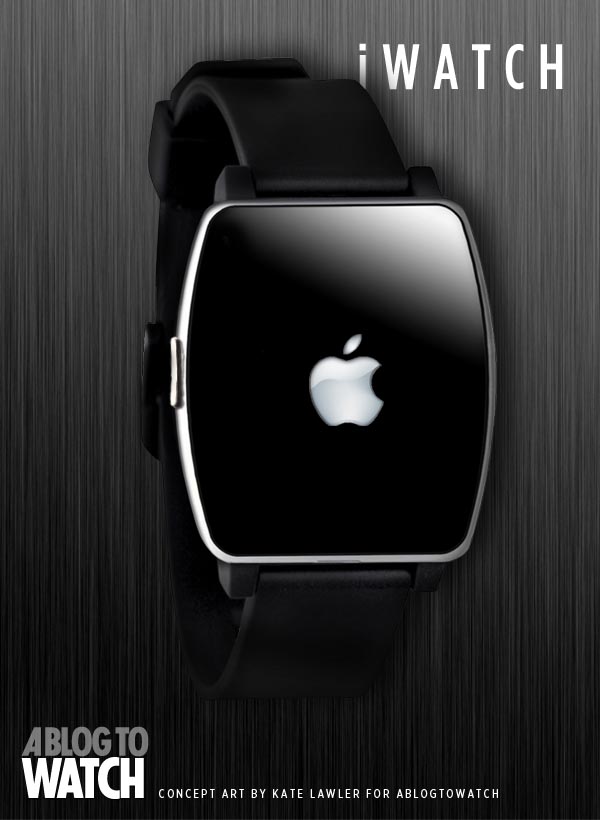
Rumors regarding new Apple products have lately proved to be extremely accurate. Since the death of Steve Jobs, Apple hasn’t quite kept the iron curtain pulled so tight. When mass speculation revolves around a new product or service, it is often a matter of “when” rather than “if” it will be released. Even before the square version of the iPod Nano came out, people were speculating that Apple was designing a wristwatch. They clearly had it in mind when making a few watch dials available on the Nano, which was later upped to about 18 different dial choices. While Apple hasn’t officially announced an upcoming “iWatch” or wrist watch product, people have been discussing its imminent release for quite some time.
A new round of rumors have popped up seeming to indicate that 2013 may very well be the year Apple finally releases a dedicated watch product. Primary to these rumors is that Apple will be working with Intel to produce a processor for a small, power efficient device. It is true that historically Intel has not been in the business of building efficient processors for small devices. Their forte has always been to produce increasingly powerful processors for computers. Having said that, a large report from Wired Magazine recently detailed Intel’s major efforts to compete or displace companies like ARM that lead the market in processors for mobile devices. A powerful processor that also sips power could produce an iWatch device with huge potential.
The questions then are what will an iWatch product do? What will make it special? What features will it have? And for me, how will it change or influence the larger timepiece market? What the following article seeks to do is discuss what an Apple watch might look like. What features it is likely to have, and why we haven’t seen one yet. I’ve also asked a few industry experts to chime in with what they think Apple has in store for us.
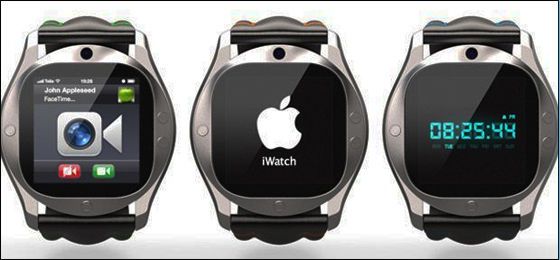
Why Should Apple Make A Watch?
A. Demand
Experts disagree on whether the market would be interested in a wristwatch from Apple. They say that less people are wearing watches these days as so many people use their phones to tell time. That may be true but I disagree on whether a huge market exists for not only wearable devices, but also watches – and I am not just saying that because I write about watches. My best argument is that people went particularly nuts for the potential of an Apple watch back around 2010 when the square iPod Nano came out. The first thing many people wanted to do was strap it to their wrist. This erupted in the massive success story of the LunaTik watch band for the Nano on Kickstarter, and a host of other items meant to allow people to wear the Nano like a watch. If there is no market for an iWatch, then why are people so desperately trying wear an Apple product on their wrist. Further, Apple has a lot of success in making a strong market where one did not exist before, do I need to list examples?
B. Experts
Apple has a research and development budget sufficient to make a project succeed where others have failed. It is often noted that past attempts to make “connected” or “smartwatches” have failed. That is true, and due to the fact that these devices weren’t very good. But people tried them anyways. I believe that Apple (while not alone), is in a position to innovate where others have left off. Apple has not just had the interest in being ahead of the “wearable devices” curve, but also the in-house brain trust and record of success in making small electronic devices more powerful with better screens and longer battery life.
C. Creativity
Apple has always been known for producing products that allow people to be creative. Software common on all Mac computers allows people to work with sound, images, and video in simple ways that most people can understand. The flexibility of a programmable screen on a watch provides another outlet for producing something that allows people to be creative. Even if that simply means allowing people to design their own watch faces. While having many options for watch screens is obvious, giving users a platform to create meaningful watch faces of their own might prove not only popular, but in line with Apple’s intentions of giving people outlets for creativity.
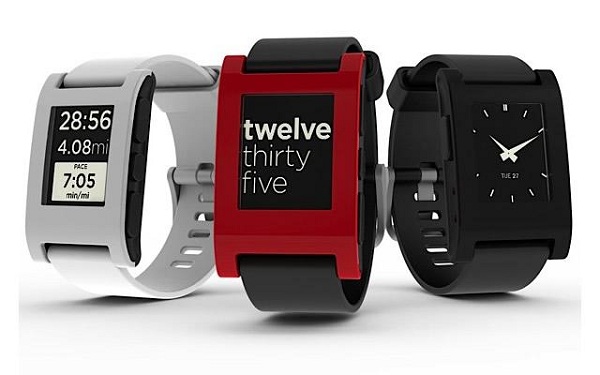
D. Market Control
With the iPhone and iPad, Apple learned that with a sufficiently good product they can become the market leader in a particular segment. Futurists tend to agree that as connected devices become more and more part of our daily routine, they will be less put in our pocket and more worn on our bodies. The wrist watch is a fantastic example. Timepieces used to be held in people’s pockets, but as technology advanced and the ability to produce smaller wrist watch movements was industrialized, the wrist watch became a much more convenient way of telling the time.
The same thing is happening with the computer. Many people today are using stationary computers much less and relying more on portable computing devices such as their phone. This applies to the majority of people who don’t strictly need grounded computers for work or hobbies. It is then logical that the phone will turn into an even more convenient wearable device. Google is also convinced of this, which is why they started the Google Glass project – putting a computer into glasses.
Apple knows that many people are working very hard on building a good smartwatch device. If they can succeed first then by default they will become the market leader just as they did with the iPhone and iPad. Anyone else pursuing a top market spot will require much more effort to not only build a better product, but to convince the public of that.
E. Branding
When I moved to San Francisco in 2004 (later back to Los Angeles) all I seemed to see were people with white ear phones stuck in their ears. Those white earphones and cables were telltale signs that they were using an iPod. The message was that most people preferred Apple when it came to their portable music players. The branding for Apple was immense. They can do the same thing with an iWatch. Assuming the watch has a distinct enough design, people wearing it will also send a clear and conspicuous message that they are proudly using an Apple product.
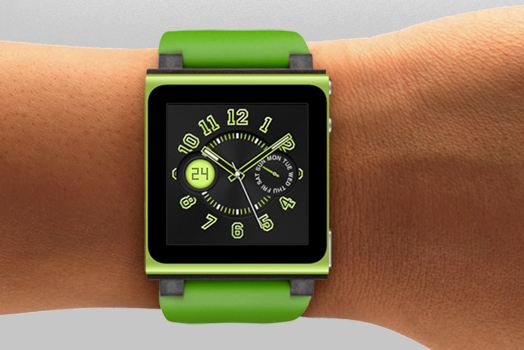
F. They Already Have
People who claim that Apple isn’t making a watch are amiss because the square iPod Nano essentially was a watch. That was the first generation test model. Apple clearly wanted to see how it would evolve, what accessories people would make for it, and the features people would use most. One area that may have surprised Apple is that people used the Nano less for music, and more for other things (such as the time or photo viewing). Perhaps this was cheating, but it provided Apple with an immense and free marketing study on exactly what would make for an ideal iWatch product. The Nano was actually never intended to be a good watch, but rather a test product. People who claim that Apple has abandoned the project because they later changed the form factor of the Nano are missing the point. Apple has changed directions with projects many times in the past, and there is no reason or precedent to assume that they will never go back to a square iPad Nano.
In fact, it makes sense that they moved away from the square form factor for the Nano. In all likelihood the release of watch would be a new product collection not associated with the iPod. Making the Nano look more like an iPod again would reduce customer confusion and internal competition for an Apple wrist-worn product.
G. Testing Next Wave Devices
As mentioned above, the future is likely full of connected electronic devices that are more integrated into what we are already wearing. Think of it as the “hands-free revolution.” As a smart company, Apple would be remiss not to begin testing such devices so that they will have an edge when they become mainstream. We could be 10-20 years away from truly integrated computing devices that we wear, but that doesn’t mean industry leaders should neglect to study and test them. For centuries people have worn gadgets, armor, and decorative items on their wrists. There is no reason that people will abandon their wrist as a suitable place to wear something important.
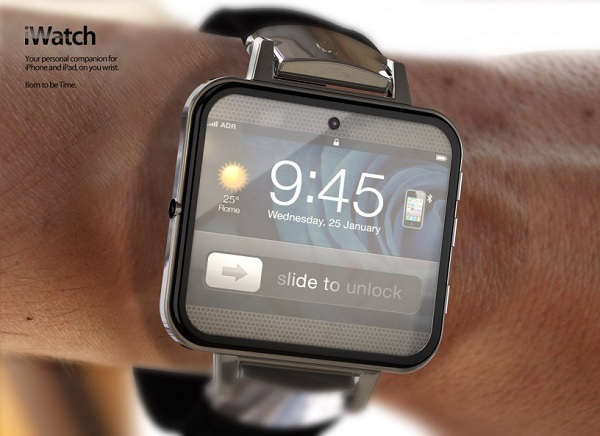
What Technologies Would An Apple Watch Have And What Will It Do?
A. Curved Screen
The exclusively flat screen for portable devices will become a hallmark of the past in the next few years. For a while now companies like Samsung have been testing curved or actually flexible screens. Apple recently filed a patent for the production of curved screens. Removing the limitations of a flat screen means that small devices like a watch will no longer be constrained by their surface area. A curved screen will also be much more aesthetically pleasing compared to a flat one. In fact, a watch with a curved screen isn’t new. In 2006 Seiko released a limited edition e-Ink watch for women that looked like a bracelet. Much of the watch was a curved e-ink screen.
B. Voice Control
With technologies like Siri, it would be silly to assume that voice control would be left out of an iWatch. Voice control is very important for the user interface as well. Inputting information would not be ideal using fingers on an iWatch. Voice control could open up huge areas of potential that are unavailable with the limited space a watch screen would have – no matter the resolution.
C. Bluetooth
No modern smartwatch would be useful without Bluetooth or some other type of connectivity tool. Bluetooth 4.0 might be limited by today’s standards given the high hopes people have for how a watch would connect with the internet or other devices, but it is a good start. At launch, an iWatch would connect to the internet through a nearby iPhone or other device via Bluetooth. Bluetooth would also be used to connect to earphones, headsets, and other devices that could be related to exercise, communication, or otherwise.
D. OLED Screen
The biggest enemy an iWatch would have is battery life. OLED screens self illuminate decreasing the need for as much backlighting power from the battery. Most experts agree that as of today, an iWatch would have to rely upon OLED (organic light emitting diodes) screens. That is not a bad thing though. With a bit more research OLED screens should have an extremely generous amount of screen resolution and beautiful detail. In fact, that future is pretty much here. LG just announced a full-sized 55 inch OLED television set. Priced at over $10,000 at launch, the LG OLED TV is thinner than most LCD TVs and much more energy efficient. Rumors about the iWatch confirm that Apple would use an OLED screen. More specifically the rumors suggest that the iWatch would use a PMOLED (passive matrix OLED). This is much more simple and basic that the more advanced AMOLED (active matrix). However, use of a PMOLED screen might be in the best interest of battery life and legibility in what is rumored to be a 1.5 inch screen.
E. Motion & Light Sensor
Starting with LED watches back in the 1970s, users needed to press a button to activate a light that would display the time. Constantly having a backlight activated would deplete the battery too quickly. The same is true today for phones, smartwatches, and other devices. We need to activate them so that the devices can save battery power when they aren’t in use. The same would apply to an Apple iWatch, but they will likely borrow a feature that Casio has had on some watches for years. This feature would incorporate a motion sensor to activate the light on the screen at the flick of a wrist. This would remove the need to use your other hand to activate the watch. Alternatively, you could use voice control to yell “show me the time.” A light sensor would likely be incorporated to ensure that the backlight does not go on in a sufficiently well-lit environment.
F. Seamless Integration
Fluid integration with other devices is in my opinion the most important element that Apple would need to polish in the release of an iWatch. As explained elsewhere in this article, the iWatch would not be totally useful on its own without connecting to other devices – at this time. This is not only to offer phone data while your iPhone is tucked away, but also to send other types of information to the iWatch. So much is obvious…
The problem is that existing devices which connect to the iPhone are problematic and finicky. Take for example Bluetooth headsets and other devices that don’t connect as reliably as we might like. When taken out of range, or if the situation is not perfect, everything seems to get screwed up. The core pairing concept of Bluetooth is good, but can be improved. Apple is in a perfect position to create a seamless and reliable connection between an iWatch and the iPhone because it controls the systems of both. It does not need to worry about compatibility with other devices (at least for now), because in the closed Apple operating system environment they can control most every variable. This means that Apple is in the unique position of being able to create a solid and reliable connection system between the iWatch and the iPhone, iPad, or other Apple devices and computers.
G. Wrist Convenience
The reason timepieces originally migrated to the wrist was a matter of convenience. The same is true for the upcoming legion of wearable devices that we will no doubt begin to see more and more of in the next 5 – 10 years. Apple is in a position to consider what functions are most comfortable when used from the wrist. No doubt things like checking the time, date, text message status, and more are comparatively more convenient when checked on the wrist than by occupying your hand and taking out your phone. The convenience of wrist worn devices is proven, and psychology has always shown that people prefer things that require the least time and effort as possible.
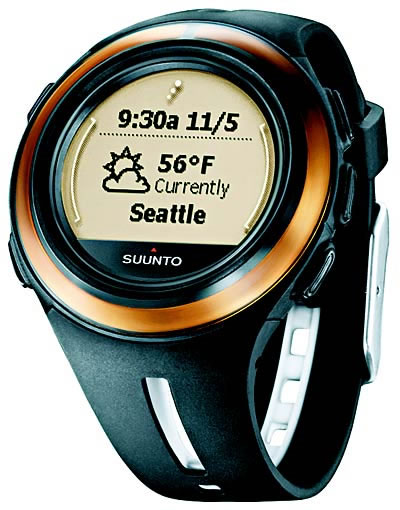
What Should Apple Learn From The Watch Industry?
One of the reasons that many gadget watches fail is that they not only appear nothing like “normal” watches, but they are mostly sub-par in every way aside from being a small wrist worn gadget. If Apple is going to be serious about making a watch, it needs to study popular watches and their successes. While Apple will never make a Rolex quality product in terms of build and materials, Japanese watch makers such as Citizen and Seiko have shown that extremely well-made (and durable) watches can be made for under $1,000.
Having said that, Apple will also likely study the vast amounts of failures from the watch industry when it came to attempts to produce commercially viable smartwatches. The most important area Apple will need to focus on is connectivity. The watch industry is remarkably talented at producing watches with self-contained features, but once those watches are meant to connect with the outside world, problems occur. The most noteworthy example of course is the SPOT watch.
A. Proper Materials
Watches get beat up and thrown around. So do phones for that matter. Apple has a lot of experience in working to create small, yet durable devices. Often with limited success given how many cracked iPhone screens I have seen. While often more expensive compared to electronics, wrist watches are prime examples of wearable luxury and durability. In an article I wrote just after the iPhone 5 was released, I commented on how Apple seems to be learning from luxury watches. Apple should learn to use more steel versus aluminum for the case, and sapphire crystal or perhaps the new Gorilla Glass 3 for an iWatch screen. Wrist watch finishing standards are often much higher than electronics. By learning from the watch industry, Apple can create an iWatch that is extremely durable, and also much more visually appealing. Until now, most smartwatches look like toys. Apple can change that if they wish to.
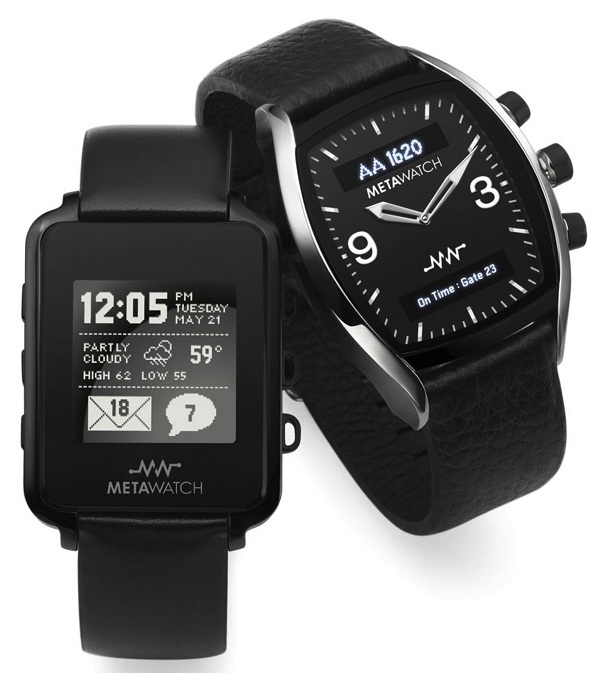
B. Comfort
On the right strap, the iPod Nano was rather comfortable, but it wasn’t at all ideal. Apple needs to realize that if they are to make a serious iWatch, it needs to be more watch than computing device in look and feel. Fortunately there are too many comfortable watch success stories to ignore. Having said that, Apple needs to carefully study the market to determine the right look and size for the iWatch. No doubt it will be an evolving design, but I hope that they quickly abandon the “flat square case on strap” approach that many people predict will be the shape of an iWatch.
The issue thus far is that Apple forced accessory makers to build straps that fit the mold of the flat and square Nano. An Apple iWatch should have a case profile and design much more like traditional watches.
C. Style
From a sheer aesthetic perspective, it is difficult to guess what an iWatch will look like. However, suffice it to say that it will have a curved screen (at least eventually), touchscreen interface, likely a few buttons, and probably some colors. Having said that, colorful watches are not considered mature devices. Apple will benefit from producing much more conservative looking iWatches so as to appeal to a wider audience. Apple will not only have to convince non-watch wearers to put on an iWatch, but they will also have to convince current watch wearers to wear an iWatch some or all of the time.
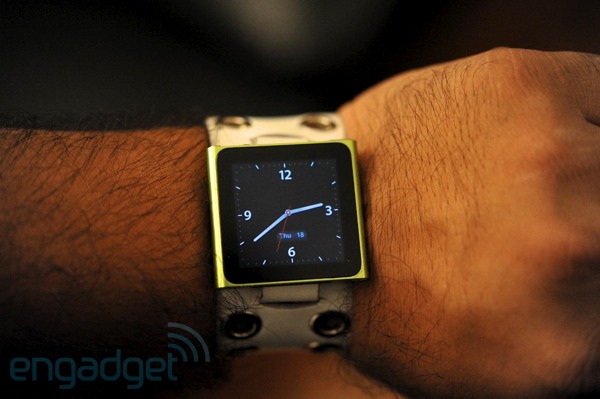
D. Design & Legibility
Gadget writer and blogger Nilay Patel wrote an extensive and well-considered review of the iPod Nano as a watch while he was working at Engadget (he currently is the editor at The Verge). In his review, Patel spent a great deal of time discussing the “potential” of the iPod Nano as a watch, but that Apple wasn’t really there yet – that is granted. The most important thing a watch needs is to be is attractive, comfortable, and easy to read at a glance. Most smartwatches these days are not. A lot of this is because gadget makers simply don’t like to work with small screens, and find them limiting these days (with good reason I suppose). Designers at Apple will need to find a way to make information on a small screen both attractive and minimalistic.
Apple will also need to rethink their hatred of buttons. Messing around with a touch screen watch in the dark or trying to activate one function and not another is not particularly enjoyable when a watch is controlled with precise swipes and touches. Buttons around the edge of an iWatch will increase people’s ability to control the watch in a more tactile manner versus having to look at the watch all the time. Legibility will be a major factor in whether consumers purchase the iWatch as a mere novelty or more deeply incorporate it into their life. A careful study of the world’s most popular watches will surely aid Apple in understanding what good legibility means.
E. Demographic
Most gadget watches look like toys or novelties for kids. At least people in the watch industry would say that. While a Nano on the wrist was cool, it was hardly a sophisticated looking device. If Apple wants its iWatch to be as successful as the iPhone in appealing to a wide demographic, it needs to design a watch that feels like something an adult might want to wear. That also means not trying to keep the price too low. People are used to paying high prices for good watches (as well as Apple products). Other iWatch speculators seem to think Apple would make a $100 iWatch. That is likely wrong or would be the wrong strategy for Apple entirely. Apple will want to produce the ultimate Apple lifestyle item, and for that to be a success it needs to be something that appeals primarily to a mature, successful, and technologically literate adult.
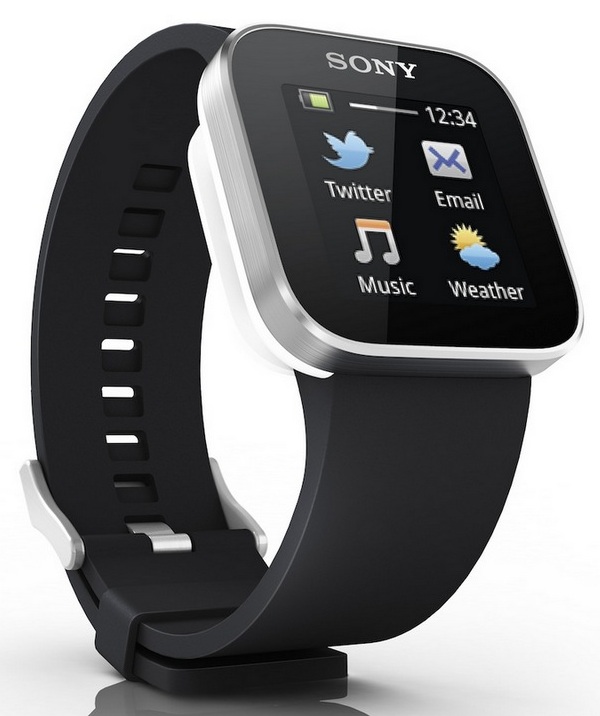
Why Hasn’t Apple Released A Watch Yet?
The discussion above was designed to explain Apple’s evolving research and developments that make the release of an iWatch something that is a matter of “when,” and not “if.” Naysayers are likely too focused on Apple’s current line-up of products and attempt to place an iWatch into an existing product family. They also focus too much on the past failures of other brands. People looking ahead will realize that the success of connected smartwatches like the Pebble and others are a sign that there is serious market interest in a smartwatch – even if it currently serves to merely be a secondary phone screen on your wrist. How an iWatch will evolve beyond the existing functions of a phone is difficult to predict.
Issues like battery life, poor connectivity options, screen issues, and a confusing value proposition for consumers are the main reasons an iWatch or other smartwatches aren’t more popular. There is however no doubt that a more than significant level of consumer interest exists for wearable devices, and that certainly leaves a gaping market hole that Apple can fill with an iWatch. Smart tech sites all seem to agree that 2013 will be the start of a new era of smartwatches whether produced by Apple or merely designed to integrate with Apple products.
BONUS: Former Apple user interface designer Bruce Tognazzini weighs in on the iWatch and why Apple will be smart to make one.
